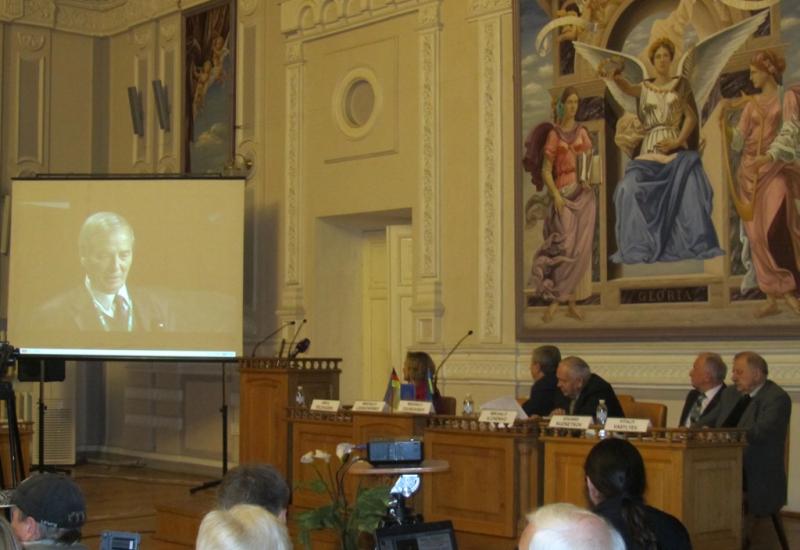November 12, for the first time in human history created on Earth spacecraft landed on the comet nucleus. The fact that until recently belonged to the sphere of science fiction has become reality.
So, today the automated landing module «Philae» from interplanetary probe of the European Space Agency ESA «Rosetta» made a landing on the Comet Churyumov - Gerasimenko nucleus and began his research. This comet in 1969 was discovered by the young astronomers Klim Churyumov (now a member of National Academy of Sciences of Ukraine, Professor, Director of the Kiev Planetarium) and Svetlana Gerasimenko (now researcher at the Institute of Astrophysics of Tajikistan).
In the Hall of the Academic Council of NTUU "KPI" with the assistance of the Embassy of Germany in Ukraine the broadcast from control center at the German Aerospace Center DLR (Deutsches Zentrum für Luft - und Raumfahrt) was organized. It was closely watched by teachers, researchers and students of the KPI, whose range of professional interests is related to space exploration.
Before the broadcast all present were welcomed by the Deputy Chief of the Diplomatic Mission of Germany to Ukraine Anke Feldhuzen and Rector of NTUU "KPI" , NAS of Ukraine academician Michael Zgurovsky, who spoke about the importance of the event for modern science and for humanity.
On the big screen live broadcasts of the DLR were carried out. During these broadcasts short interview for the audience were given by Klim Churyumov and Svetlana Gerasimenko invited to this event to Germany. Centre experts talked about the progress of the convergence of the module and the comet. One more interview Klym Churyumov in which he gave details about the circumstances of the discovery of the comet, was shown on another screen. There was also the demonstration of the film about the mission "Rosetta". In addition, the Vice-Rector of NTUU "KPI" on Research NAS of Ukraine academician Mikhail Il'chenko spoke about science and technology space program NTUu "KPI", designed by 2019, and deputy dean of aerospace systems Valery Zinchenko - KPI's contribution to the development of aviation and technical technology.
Interplanetary probe of the European Space Agency ESA «Rosetta" was launched into space 10 years ago from Kourou in French Guiana. Name of the probe comes from the famous Rosetta stone by which scientists could decipher the ancient Egyptian hieroglyphs; landing module - from the name of the island on the River Nile phylum, where it was found obelisk with inscriptions that have helped make out the writing Rosetta stone. So both names are symbolic - Mission "Rosetta" is to bring humanity to a solution, but now not of hieroglyphs but secrets of formation of the solar system and the formation of planets.
During its flight "Rosetta" went through the 7 billion miles of space. According to the flight plan, it has taken a number of gravitational maneuvers near Earth and Mars and went into orbit of a comet. Since June 8, 2011 to January 20, 2014 the station was in "sleep" mode. In August 2014 it began to approach the comet. November 12, space probe is at a distance of 22.5 km from the comet's nucleus, allowing to carry out the maneuvers required for successful landing module "phylea". Its separation from the probe began about eleven o'clock Moscow time. With equipment installed on board the module, the landing on the comet nucleus is constantly monitored by control center.
The last minutes before landing a tension in the room, where they were gathered Kyiv Polytechnic, steady grew - as well as in the control center. Everyone was waiting for data telemetry. Finally, when the world saw the specialists of the Center jumped from their seats and began to greet each other, Academic Council Hall broke out by applause: the module successfully landed on the nucleus of the Comet!
On the photo: Klim Churyumov on line

